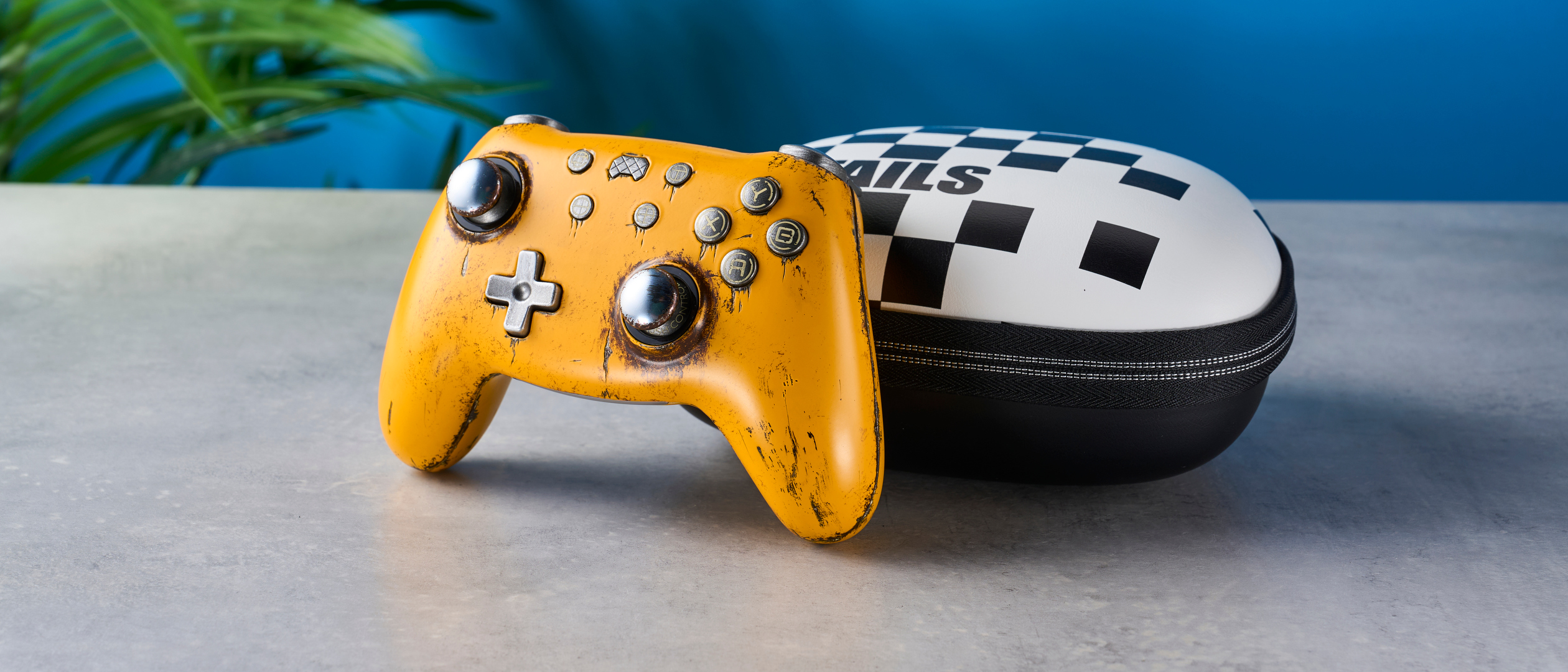Tom's Guide Verdict
The PB Tails Metal Crush Defender is at the forefront of gaming controllers, technologically speaking. Despite its beaten up aesthetic, build quality is absolutely stellar. Thanks to TMR magnetic thumbsticks that feel great and perform even better, plus Hall Effect triggers, this PC and Switch-compatible gamepad is one I really can’t put down.
Pros
- +
TMR thumbsticks
- +
Hall effect triggers
- +
Impressive visuals
- +
Switch / Xbox button toggle
Cons
- -
Lack of customization
- -
Heavy
- -
Expensive metal edition
Why you can trust Tom's Guide
The PB Tails Metal Crush Defender is a metal-clad controller with a striking ’battle-damaged’ finish that looks like something straight out of ‘’Borderlands’’. Don’t get me wrong, it's far better looking than practically anything from the horrendous movie adaptation — and with TMR joysticks and hall effect triggers, is one of the best controllers you can scavenge today performance-wise.
In both console and PC games, the Crush Defender is one of the few controllers available right now that supports Tunnelling Magneto Resistance (TMR), an improvement over hall effect that allows for even more accurate tracking on the thumbsticks than what you would get with a hall effect gamepad. This is all contained within a comfortable case — If you have used an Xbox style controller before, the Crush Defender feels the same as an official gamepad.
There are a few drawbacks, which users of other high performance controllers like the GameSir Kaleid will definitely miss. The lack of any button customization, as well as the loss of a hair trigger option, will leave a sour taste considering that the controller costs over $100. For your money, you’re getting a controller that works very well out of the box, but you’re out of options if you want to adjust anything beyond the visuals — if this isn’t that important to you, you can pick up the plastic version of the Crush for just $49.
Read on for my full PB Tails Metal Crush Defender review.
PB Tails Metal Crush Defender review: Cheat Sheet
- What is it? A PC and Nintendo Switch controller with a distinct, battle-scarred metal outer shell
- Who is it for? Anyone after a high-performance gaming controller
- What does it cost? The metal edition is pretty expensive, at $109, but there’s a plastic edition for $49, which still boasts TMR thumbsticks
- What do we like? The TMR thumbsticks are phenomenal, and the design is well-executed
- What don’t we like? The main issue is the lack of customization, but the metal version is also heavy and pricey versus the plastic model
PB Tails Metal Crush Defender review: Specs
| Price | $109 / £85 |
| Layout | Xbox ABYX |
| Connection | 2.4GHz, Wired USB, Bluetooth |
| Battery | 860 mAh |
| Colors | Metal Yellow |
| Platforms | PC, Switch, Mobile |
| Weight | 12.2 ounces |
| Size | 6.1 x 4 x 2.6 inches |
Disclaimer
Need help deciding between TMR controllers? Check out our GameSir Tarantula Pro vs PB Tails Metal Crush Defender face-off to find the right one for you.
PB Tails Metal Crush Defender review: The ups
Supporting both Switch and Xbox-style formats with a handy toggle, the Crush Defender offers lots of style with plenty of substance thanks to the snappy magnetic controls, comfortable ergonomics and stellar build quality.
Design
With a distinctive metal-clad design made from a Zinc alloy, the Crush Defender is equal parts stylish and sturdy — all in spite of its deliberately scrappy appearance. Thankfully, the controller is untextured, so the rust and wear is all for show. The metal case adds about 3.5 ounces to the weight of the controller over the plastic version — not a massive increase, but enough to cause some discomfort holding the controller for long periods. On the flip side, the added weight helps the controller feel more substantive, avoiding that cheap hollow feeling that some other more expensive controllers can have, like the similarly Xbox-styled PowerA Moga XP7-X ($99).
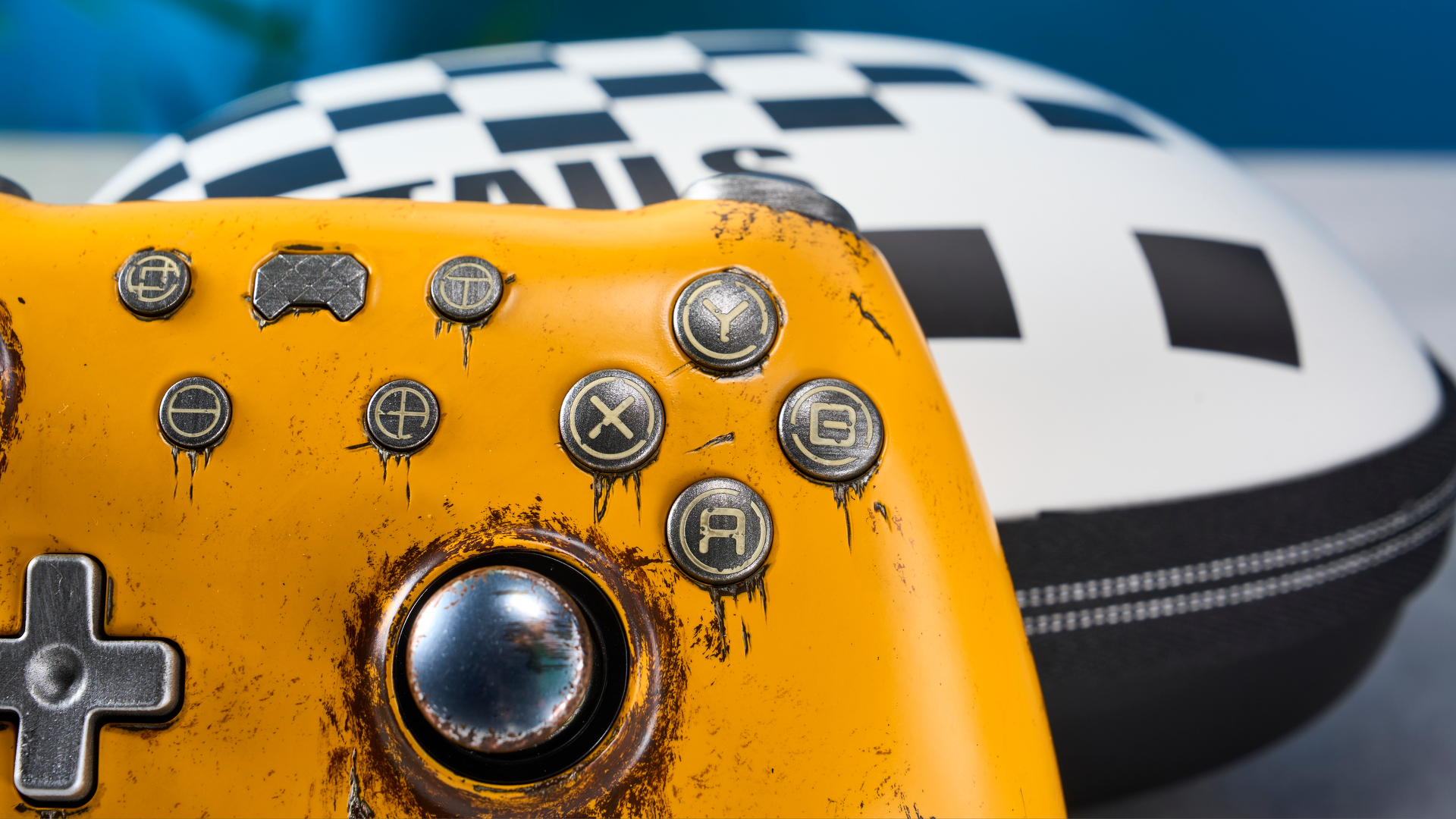
The scrapyard theme continues with the face buttons, which look great but may affect readability due to their complex design. Another word of caution is that the buttons have quite a shallow press — if you prefer mushier buttons, this won’t be the controller for you. If you opt for the plastic model though, the face buttons feature customizable RGB lighting.
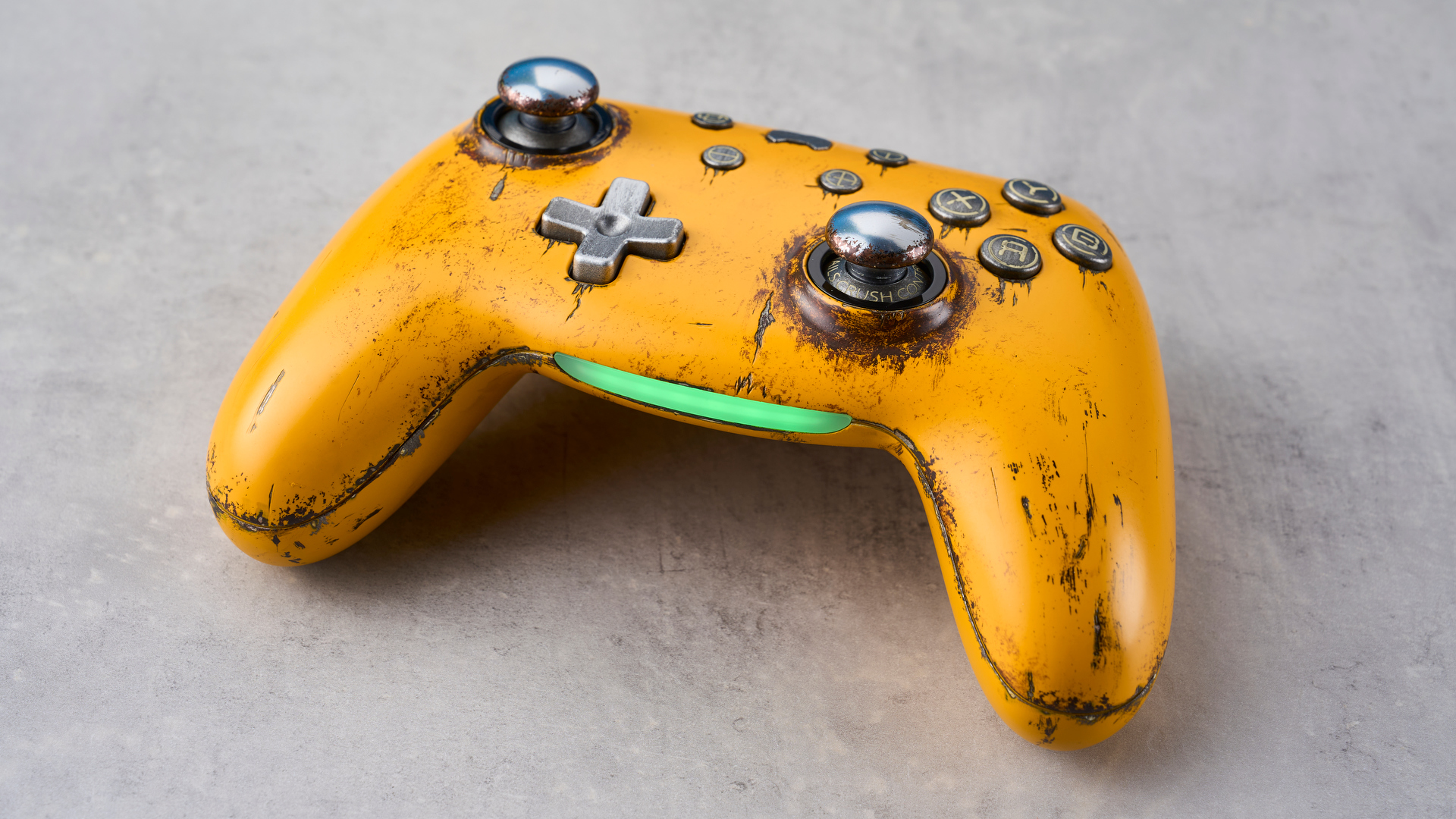
Naturally, the post-apocalyptic visuals also extend to the silver triggers and thumbsticks. This is a special feature of the metal Crush Defender, and I was worried that this would affect grip — thankfully, the texture of the silver did not negatively affect usage. The gamepad also comes with a neat ‘MagCase’, which allows for replacement of the outer case with a variety of alternative designs. It’s easy to remove, and PB Tails offers replacements in various guises for just $7.
Ergonomics
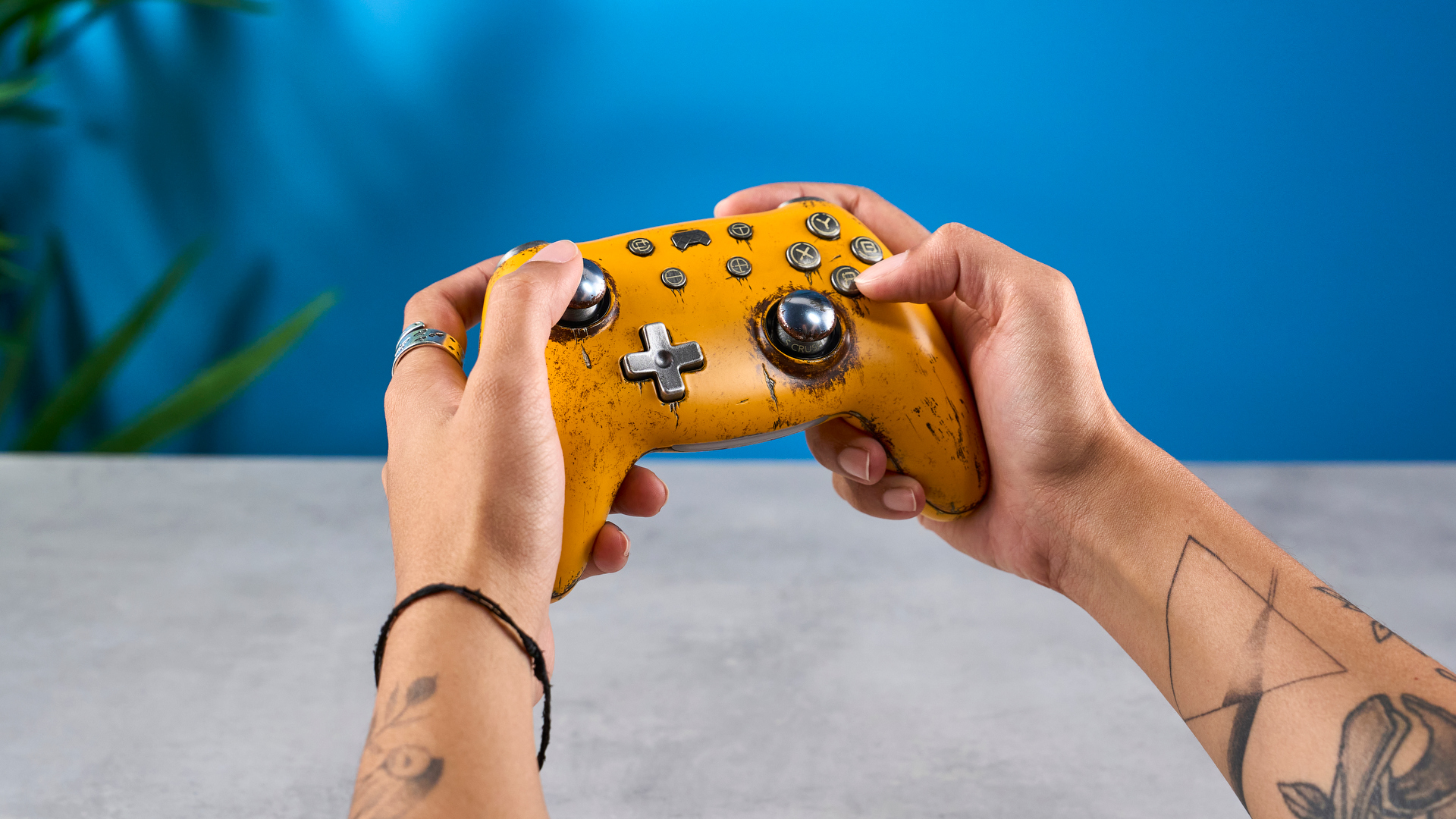
The Crush Defender uses an asymmetrical joystick layout and sports chunky, bulbous ergonomics reminiscent of an Xbox 360 controller. The shape and grips are a natural fit for medium to large hands, as is the button spacing, and I found the controller extremely comfortable to use — I’ve avoided the Xbox-style grip in the past in favor of smaller DualShock pads, but the Crush Defender has won me over to the larger profile, with the thicker grips providing better support. That said, the overall size of the controller might pose some difficulty for those with smaller hands.
Connectivity
Conveniently, the Crush Defender supports a range of connections, making it a versatile pad for gaming on the go — you can hook it up via an included 2.4GHz dongle, Bluetooth or via a USB wired connection. You connect the gamepad to the Switch like you would with any other Nintendo controller, and it worked flawlessly in testing — holding down the connection button and pressing both triggers synced the controller with no issues.
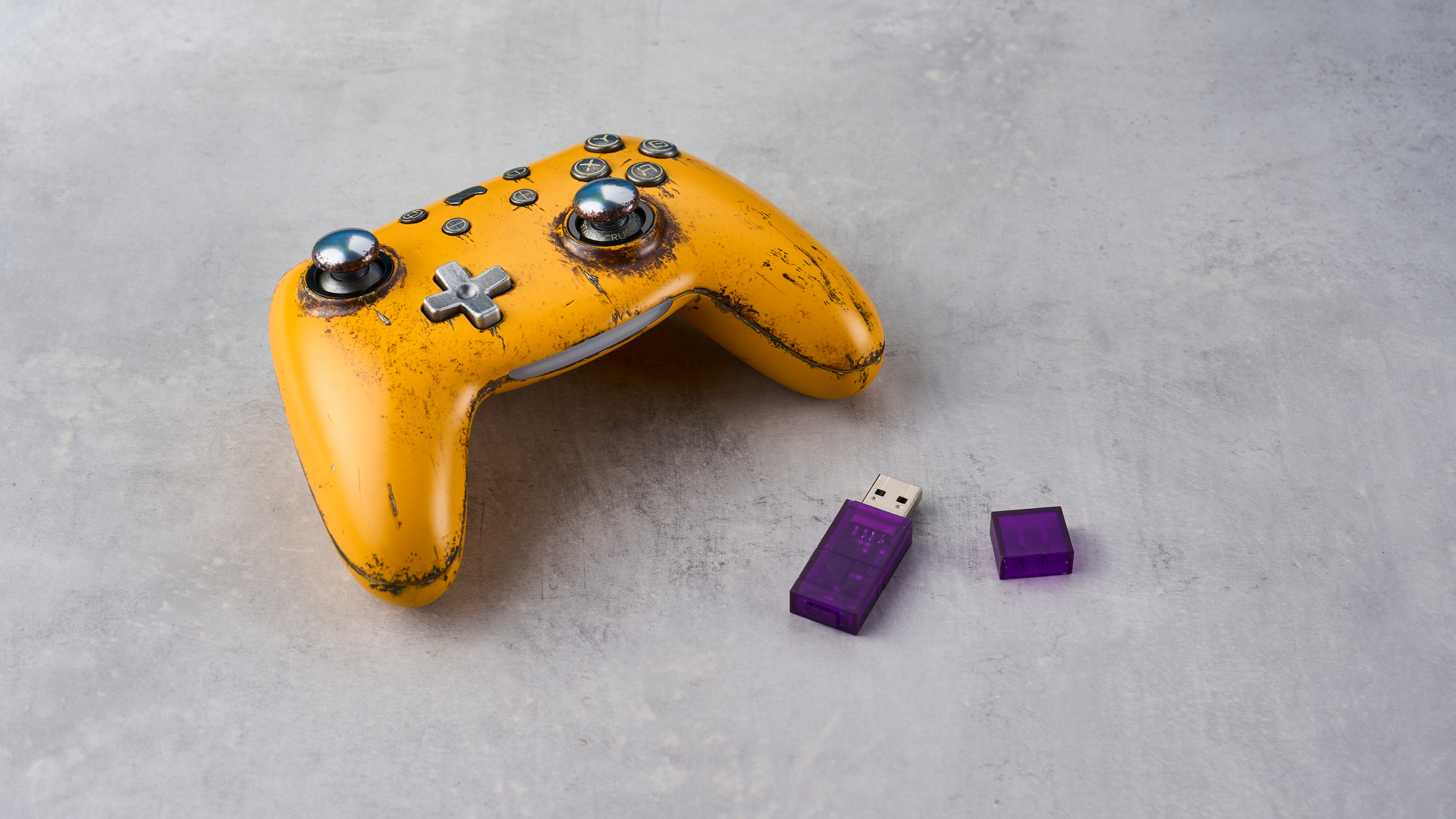
On PC, I used the 2.4GHz dongle. The latency was practically unnoticeable, which was great for those split second reactions in racing games. I also saw a big increase in my performance pulling off quick combos in fighting games like Guilty Gear Strive. Battery life was decent, thanks to the low power consumption of the TMR thumbsticks — PB Tails lists the battery life at 10 hours from its 860mAh battery, which proved to be accurate in testing.
TMR Thumbsticks
The Crush Defender’s TMR joysticks are a massive advantage over non-magnetic joysticks — even those in first party JoyCon and DualShock controllers. TMR (Tunneling Magneto-resistance) joysticks work similarly to Hall Effect sticks, which use magnets and powerful electromagnetic waves to determine the position of the switch, except by instead detecting weak waves. Think of it as a straight up improved version of Hall Effect sensors — they are incredibly accurate and sensitive to small movements, and consume next to no battery.
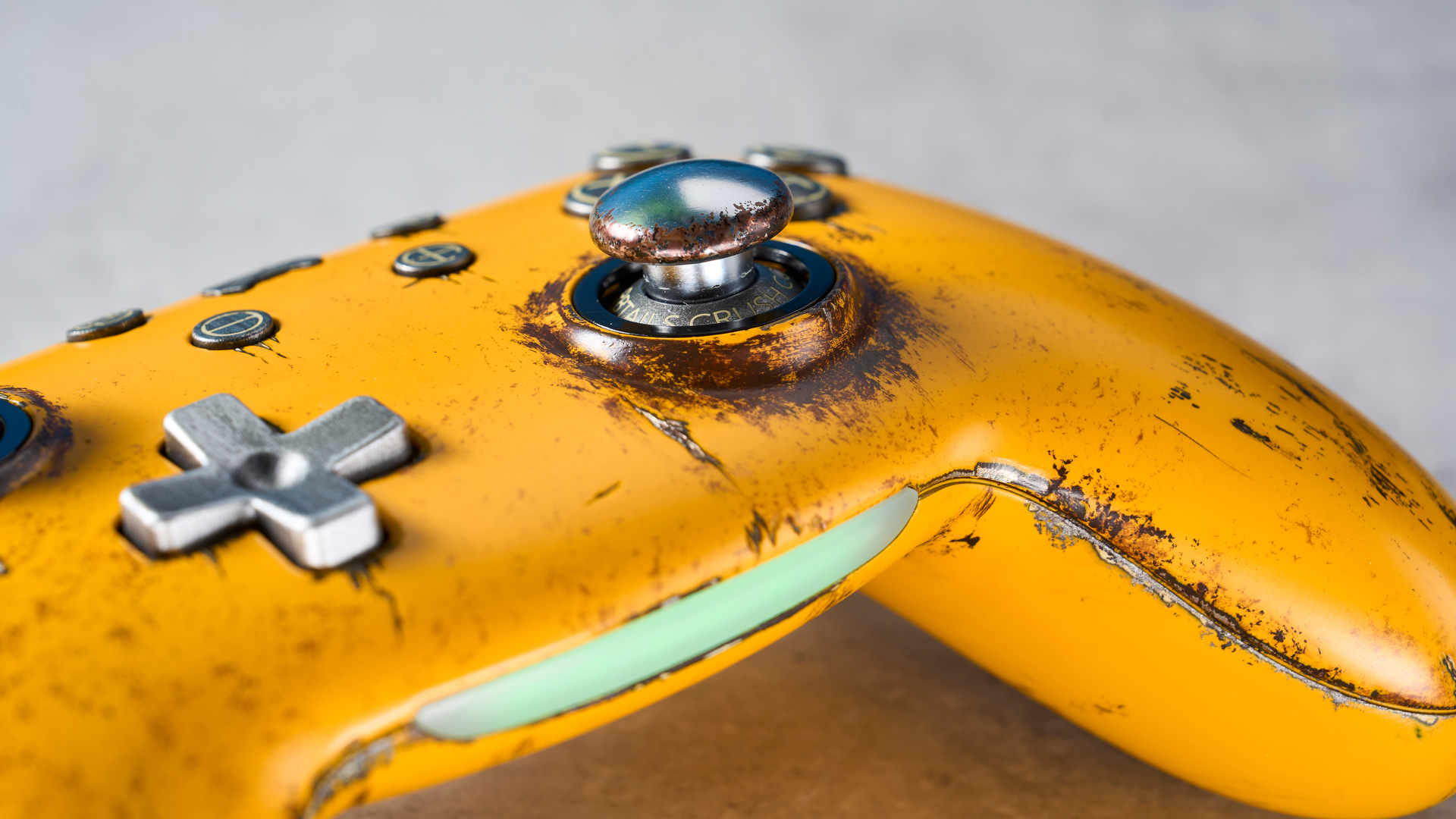
I really enjoyed using the TMR sticks compared to traditional ones. The improved level of accuracy meant that my inputs were more fluid and I had greater control over my on-screen movements. The biggest improvement for me was felt in Super Smash Bros. Ultimate, where the TMR thumbsticks gave me a needed boost in controlling my character, helping me out with tilt attacks that I usually struggle with on the JoyCons.
Console Performance
The Crush Defender is heavily oriented towards the Switch, with the more typical ‘Start’ and ‘Select/Share’ buttons being replaced by Nintendo’s ‘+’ and ‘-’. Upon flipping the toggle on top of the controller to ‘S’, the button configuration will change to mirror that of a Pro controller. Connecting to my console worked flawlessly, and after pairing there was no trouble using the controller for my favorite games.
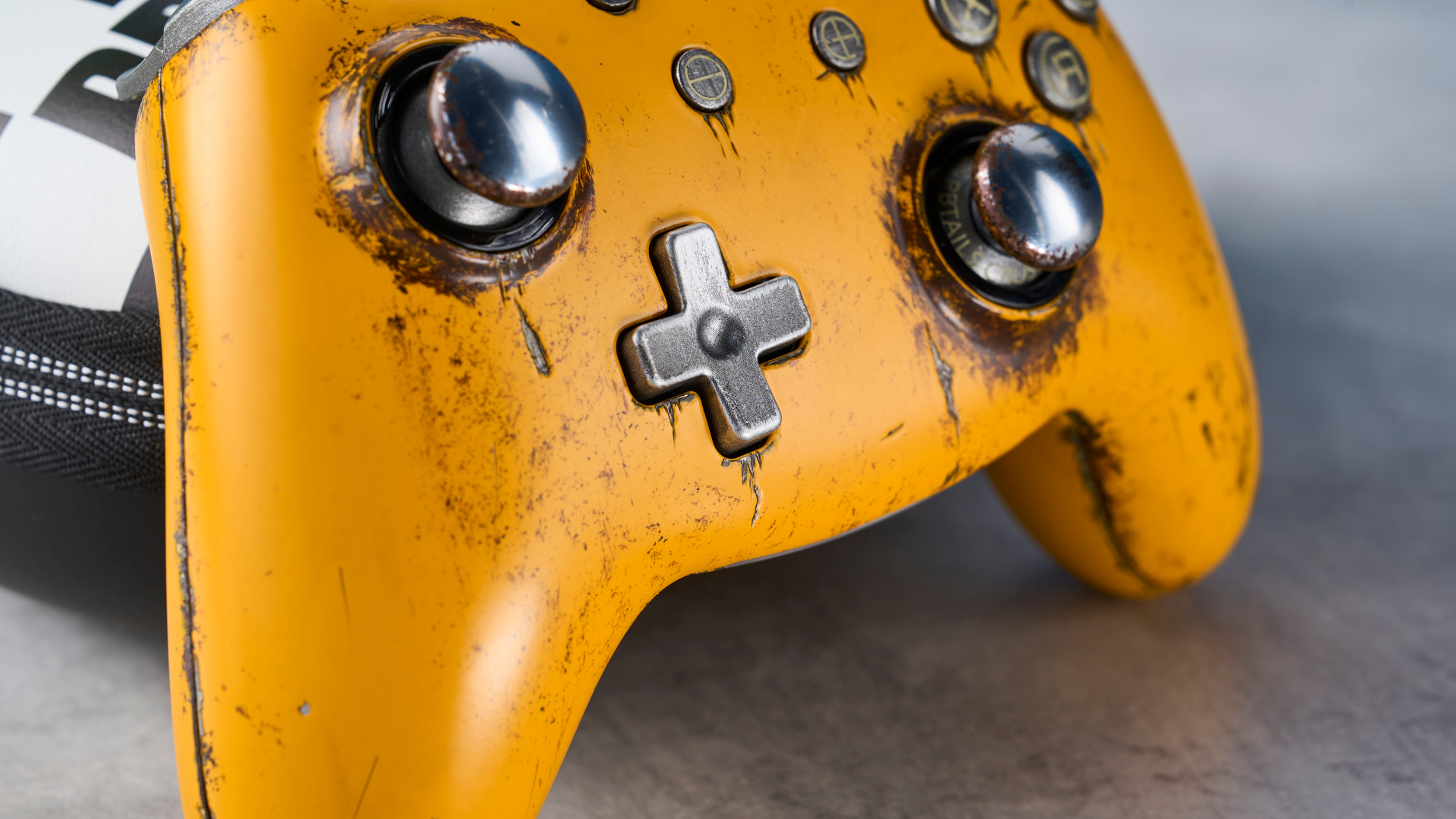
Playing through the brilliant re-release of Metal Gear Solid 2 on the Switch was without fault, with the first person sniping portion of the game in particular being less of a headache thanks to the enhanced accuracy of the controller.
Don’t tell my friends, but I also cheated in Mario Party Superstars using the Crush Defender’s ‘turbo’ feature. Pressing the ‘T’ button along with one of the face buttons allows a single press to register as an inhumanly fast rapid press — great for winning the more exhausting minigames, especially against the definitely-cheating AI.
PC Performance
The Crush Defender has now permanently replaced my DualShock controller for PC gaming, primarily due to the former’s raw performance on PC. Steam instantly recognised the controller no matter the connection method I used, and upon switching the toggle to Xbox I was able to play all of my games with no issues.
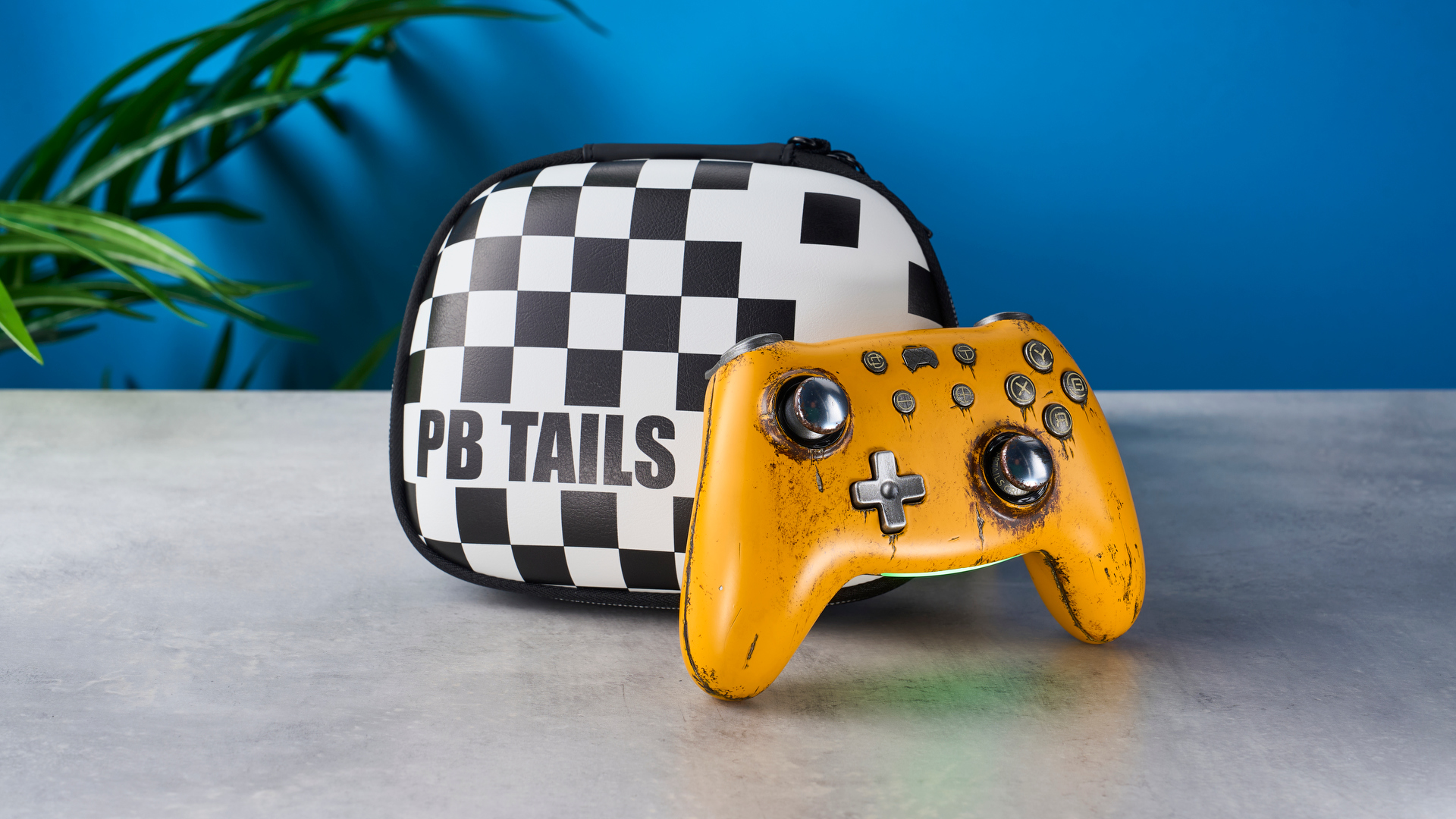
I particularly appreciated the magnetic thumbsticks and triggers in Ace Combat 7, which gave me the extra accuracy needed to pull off some narrow maneuvers in my fighter jet. I crashed into far fewer mountains than I usually would while zipping between valleys on levels where a low altitude was mandatory, and while no replacement for a flight stick, the metallic feel of the controller definitely played a small part in immersing me into the cockpit.
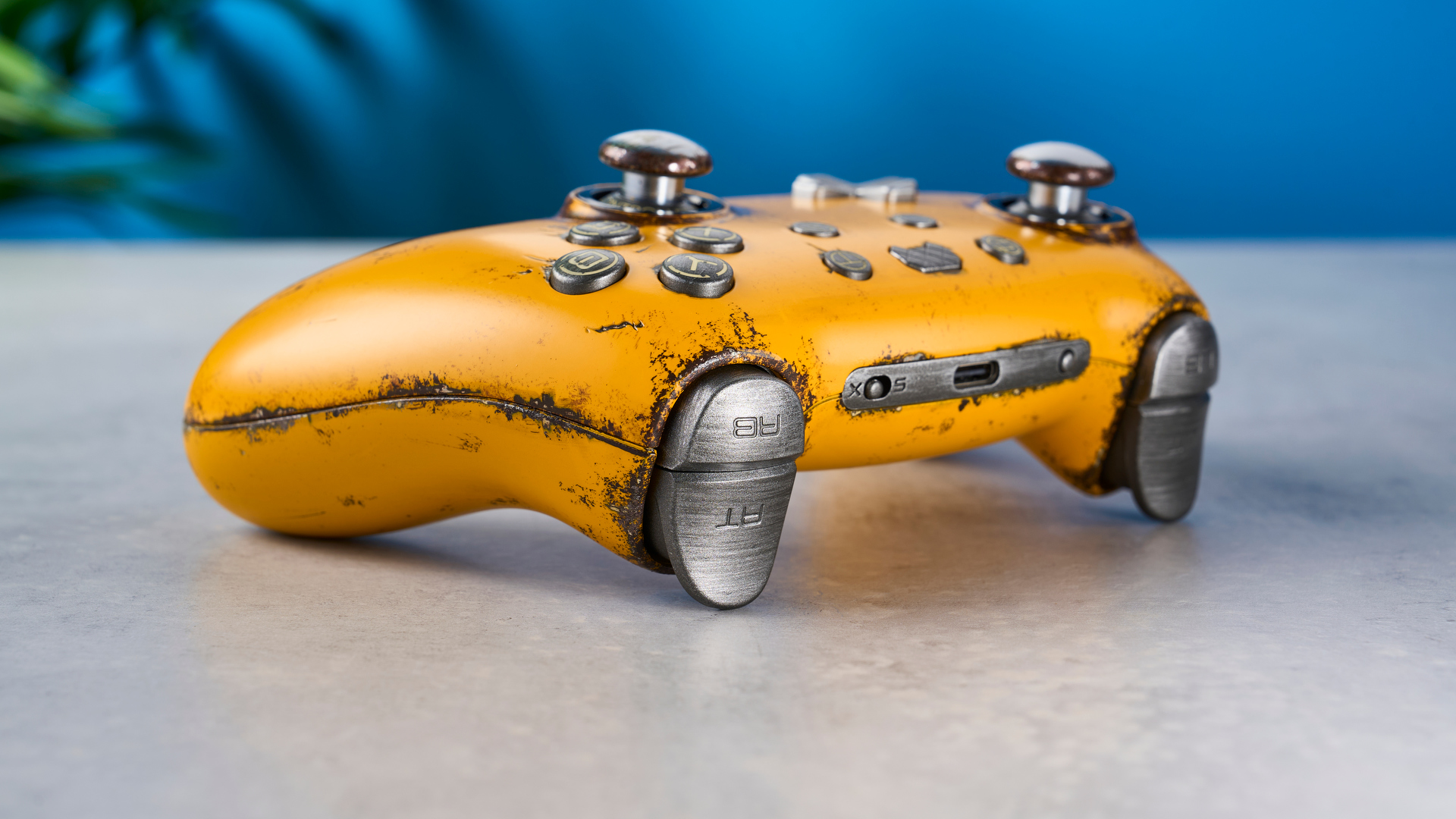
The Hall Effect triggers in particular were very helpful, allowing me to have precise control over my acceleration in flying and racing games, which gave me an advantage when it came to controlling acceleration. They were fast and comfortable to use, although it was disappointing that there was not a way to take advantage of these via customization — even the cheap HyperX Clutch Gladiate ($34) features hair trigger locks for a trigger action similar to that of a keyboard and mouse.
PB Tails Metal Crush Defender review: The downs
The Crush Defender has a flaw in the lack of customization, a big let-down considering the price. Besides this, you might want to consider the plastic model over the metal one — the lower price of $49 is almost too good to pass on.
Controller customization
Unlike other, cheaper controllers such as the GameSir Kaleid, the Crush Defender is not very customizable outside of the physical case — you cannot adjust or remap button configurations, or alter the Hall Effect triggers in any way. While I was able to configure the controller using third party software, like Steam, I was overall disappointed by the lack of customization which could have been helped by companion software being available — customization software comes as standard with the more expensive controllers out there, like the $70 8BitDo Ultimate. It leaves the controller feeling lackluster, especially considering that the Kaleid features full remapping and adjustable hair triggers. Because of this, the hall effect triggers in particular felt like they were not taken full advantage of on the Crush.
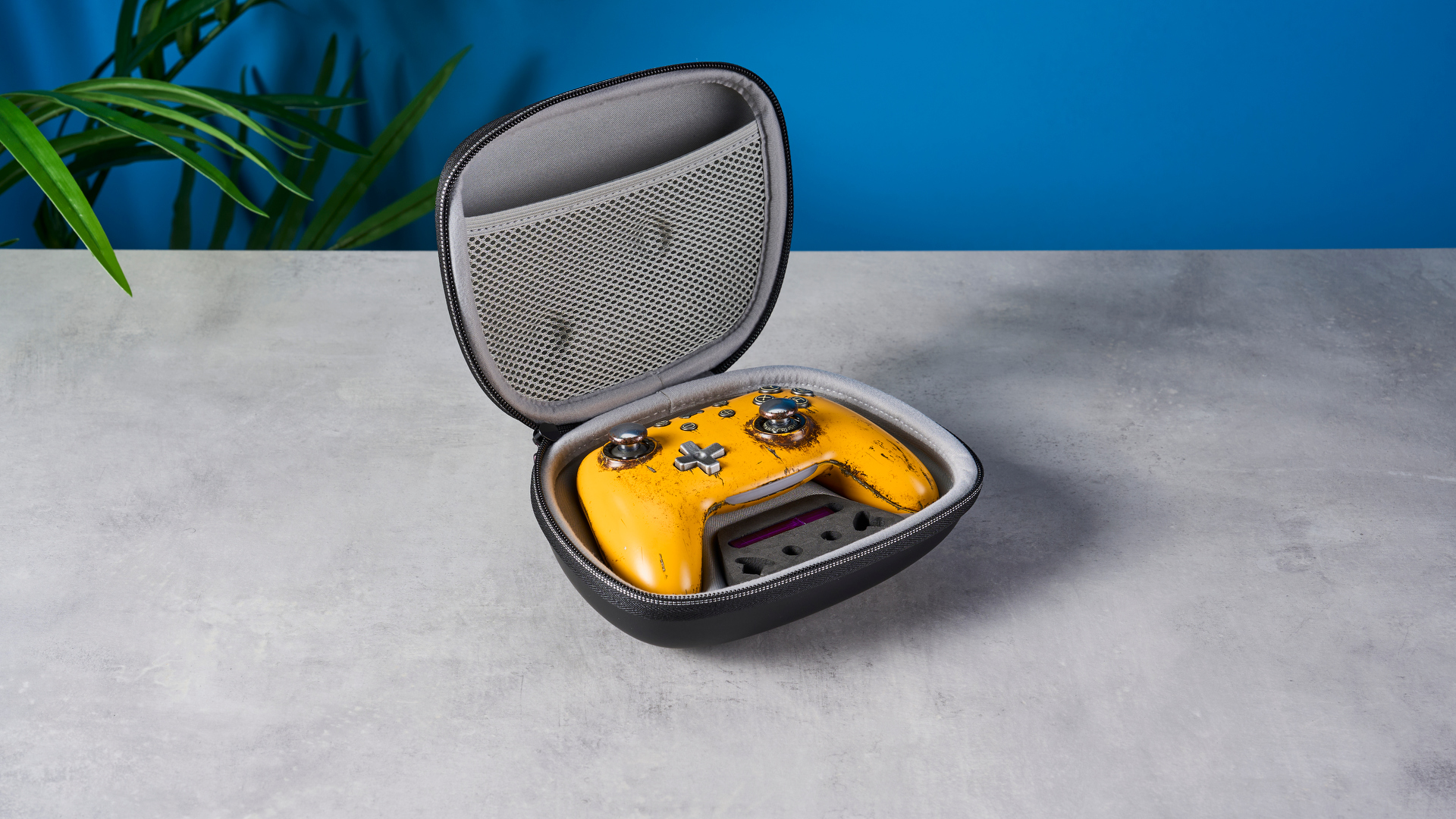
A relatively minor aspect of this issue, but nonetheless I was saddened to see that the RGB light bar at the bottom of the controller was not customizable when using the controller with the Switch. The gamepad will stick to a garish blue and red scheme, brightly illuminating when using the left and right triggers. It's purely visual, and the right trigger bar indicates how much the hall effect trigger has been compressed, but I would much rather turn this off entirely. The onboard settings to customize the lighting — accessible by holding the ‘T’ button along with rotating the left thumbstick to adjust color and the plus and minus buttons to adjust brightness — otherwise work great on PC.
Value
This is not necessarily a criticism of the metal edition, but the price may be a little high when you consider that the regular Crush model provides many of the same benefits and features. At $109, this is one of the more expensive controllers on the market, and the $49 plastic versions are much more competitive. TMR is a new technology that cannot be found on many controllers, so the fact you can grab this for half the price with the plastic model may be much more tempting to those on a budget.
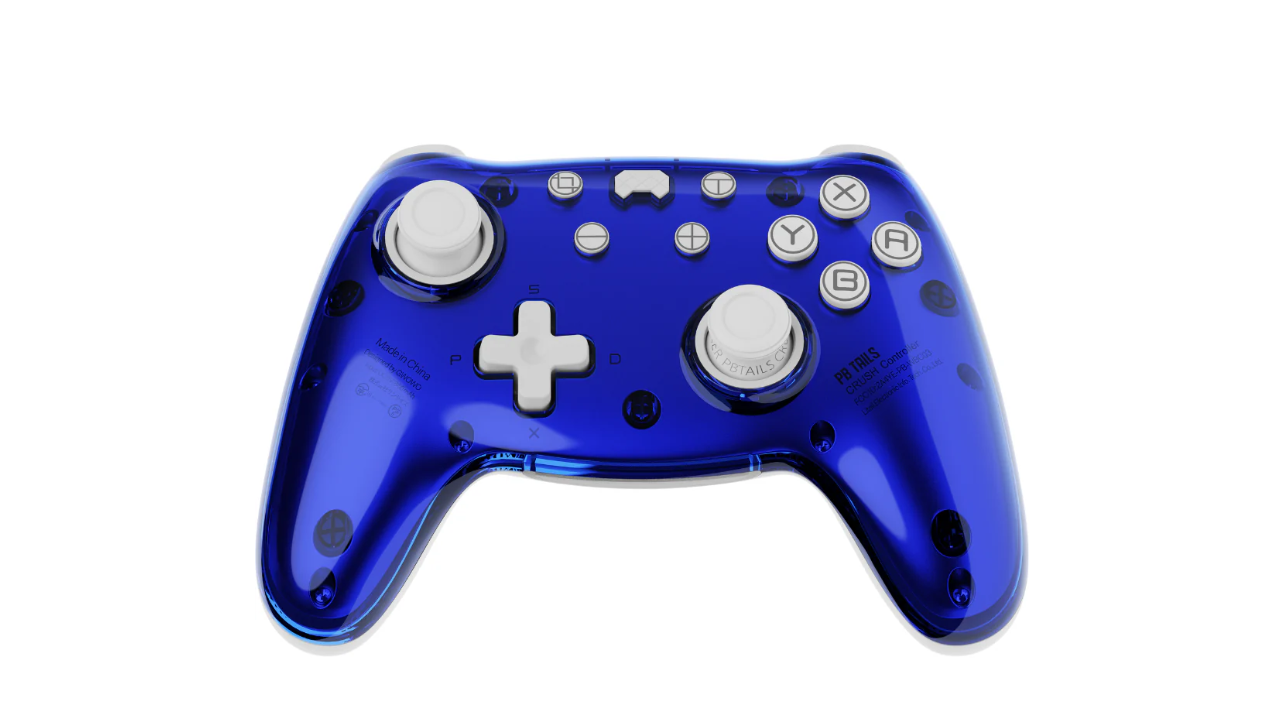
If accuracy isn’t necessarily the most important thing to you in a controller, you can save money by settling with a hall effect controller instead. The GameSir Kaleid is a high performing controller with hall effect thumbsticks and triggers, and a great budget choice if you can settle for a wired-only design.
PB Tails Metal Crush Defender review: Verdict
I think I have found my new go-to controller. The PB Tails Crush Defender is easily one of the best controllers for the Switch and my new favorite pad for PC gaming. Until TMR becomes more widespread, this controller will be the foremost way of getting your hands on arguably the most accurate thumbsticks available right now.
I can’t neglect to mention the design again. The Crush Defender looks so good, I could easily give it a place on my shelf as a display piece. More importantly, though, while striking visual designs are commonplace in this market, it's refreshing to see its unique look backed up by such high performance.
The main consideration you should have before buying the Crush Defender is whether the metal case is for you— it feels like an indulgence rather than a necessity due to the lack of any significant features or improvements. If you don’t mind doubling the cost in exchange for a literal heavy-metal design, the metal version of the Crush controller is absolutely an easy recommendation.

Eve is a Staff Writer on the Reviews team at Tom’s Guide. Her expertise centers around computing, and she loves testing out the very best high performance peripherals to help you make the right choice. With her experience working in IT and a love for gaming, she has an eye for function and efficiency— this is reflected in the time spent building and customizing her own desktop PCs. In her downtime, Eve is always on the lookout for new tech to give her a competitive edge in the latest games, or a boost in her daily productivity.
